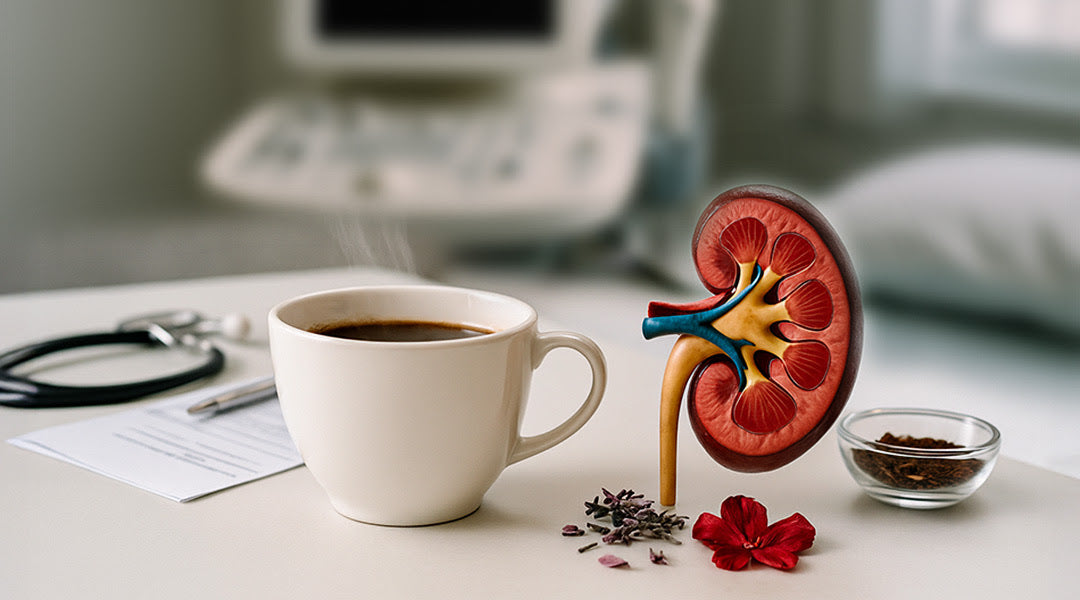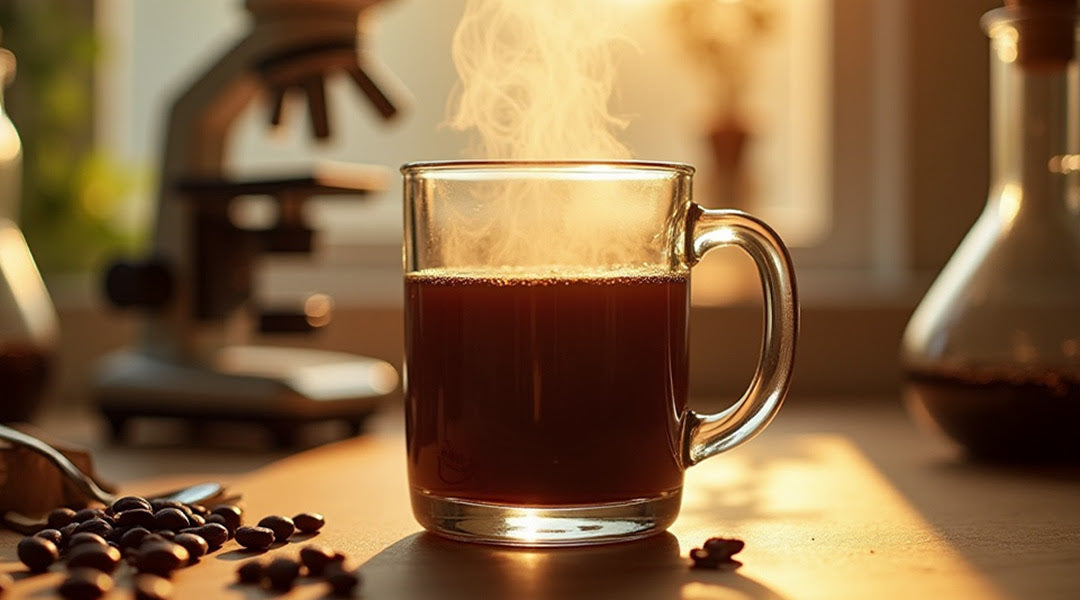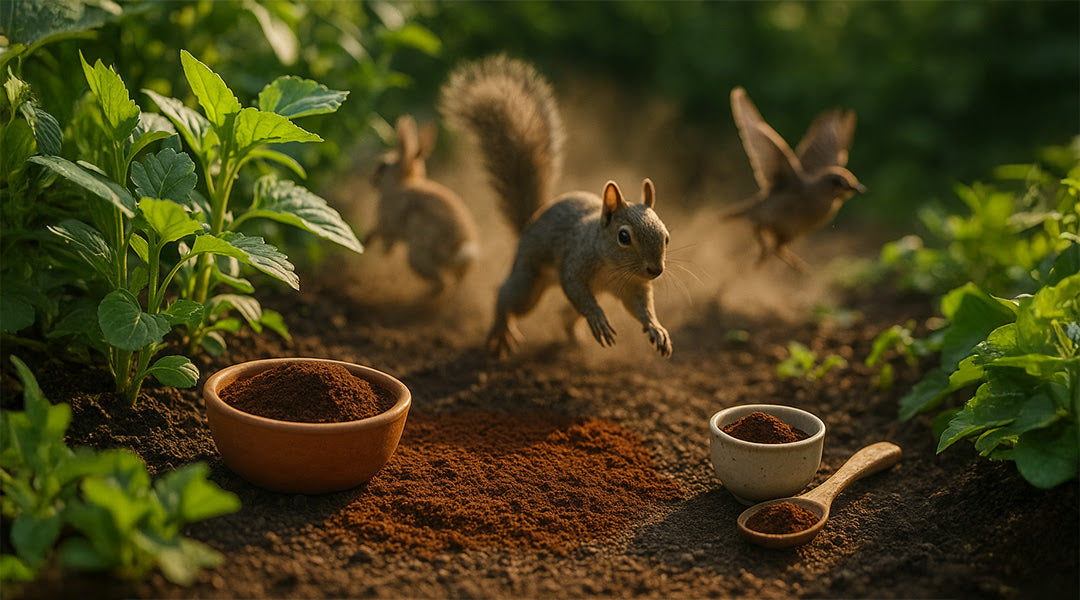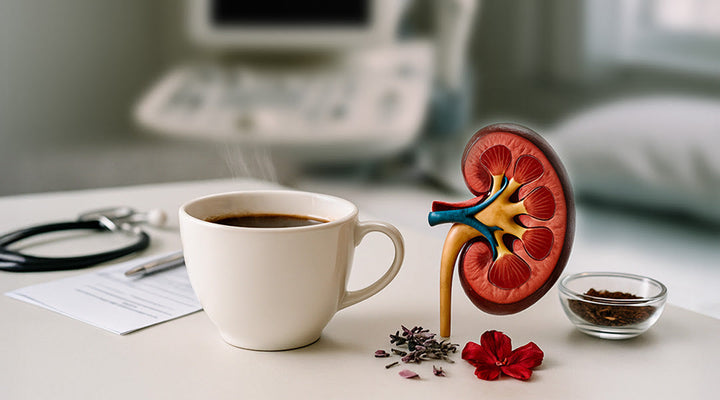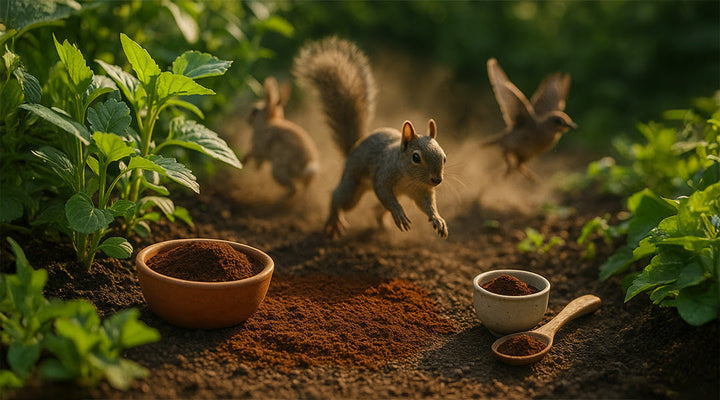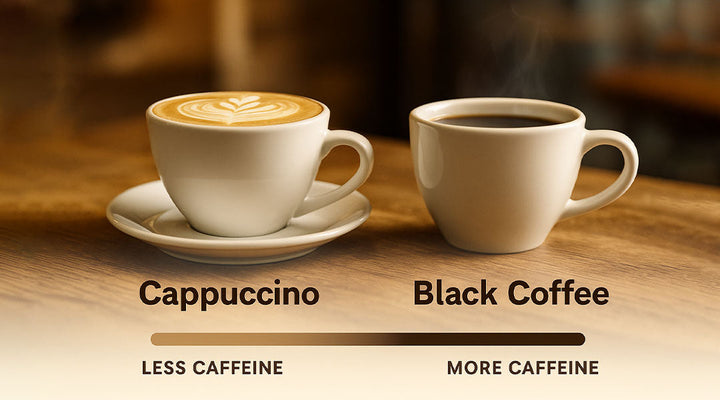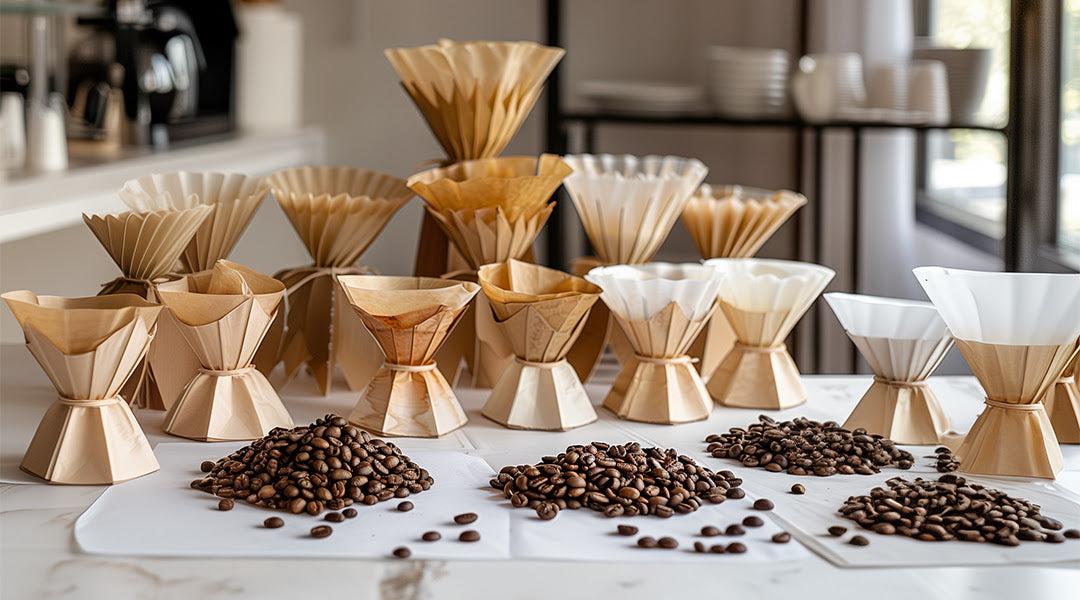
A Complete Guide to Coffee Filter Sizes, Types and Shapes
Coffee enthusiasts know that every element of the brewing process matters - especially the coffee filter. It's not just a barrier between grounds and cup; it's a crucial component that shapes your coffee's flavor and texture. In this comprehensive guide, we'll dive deep into the world of coffee filters, exploring their sizes, types and shapes and how each contributes to the perfect brew.
The Importance of the Right Filter
Picking the coffee filter goes beyond functionality; it holds a significant role in the process of brewing coffee and greatly influences the overall sensory experience. The type, size and shape of your filter all contribute to determining the flavor profile and texture of your coffee.
Let's delve into it; the kind of filter you opt for can significantly impact the taste. For instance paper filters are well known for their ability to capture oils and fine particles resulting in cleaner cups. Conversely metal filters allow more oils and finer particles to pass through contributing to a richer coffee. So when choosing between a paper or metal filter it's not just about ease or environmental considerations; it's about deciding what flavor and texture you prefer in your cup of coffee.
Size is also crucial. A mismatch between your coffee maker and filter size can result in poor extraction leaving you with a less then impressive brew. Imagine using a small filter in a large coffee maker; this could lead to uneven distribution of water over the grounds ultimately resulting in an inconsistent brewing process.
On the other hand if the filter is too big it may not fit properly. Allow water to pass through without fully extracting the flavor from the coffee grounds. This can result in an under extracted cup of coffee.
The shape of the filter also plays a role. For instance cone shaped filters concentrate the flow of water through the coffee grounds resulting in a thorough extraction of flavors. This design is often preferred because it brings out subtle nuances in the coffee. On the other hand basket shaped filters have a flat surface area allowing for a different flow pattern that can lead to a distinct extraction profile. This often results in a more flavorful brew.
Brief Overview of Filter Varieties

Understanding these variations is essential for perfecting your home brewing game. Basket filters are commonly used in drip coffee machines due to their convenience and user friendly nature and thus making them popular choices among households.
When it comes to coffee filters cone filters are often preferred because they can enhance the richness and complexity of coffee flavors in pour over brewing methods. Specialty filters, like Chemex and V60 are specifically designed for brewing devices providing a refined and customized brewing experience.
By familiarizing yourself with the types of filters you can improve your coffee making skills. Savor a superior cup every time.
Exploring Coffee Filter Sizes
The size of the coffee filter you choose is just as important. It determines how well the filter fits in your coffee maker and how effectively it performs its job. Using a filter that doesn't fit properly can result in extraction and messy situations during brewing.
Basket Filters

Cone Filters

Chemex Filters

V60 and Kalita Wave Filters

How Do Coffee Filters Work?
The Science Behind Filtration
Understanding the science behind coffee filtration is key to mastering the art of brewing. Coffee filters serve a dual role in the brewing process. Firstly, they act as a barrier, separating the coffee grounds from the liquid, ensuring a clear brew without residue. Secondly and perhaps more importantly, they play a significant role in the degree of extraction - a crucial factor that impacts the overall flavor profile of the coffee.
The shape and texture of the filter influence how water interacts with the coffee grounds. For instance, a conical filter facilitates a deeper and more uniform extraction as water flows through the grounds, while a flat-bottomed filter might result in a slightly different extraction pattern, affecting the flavor nuances. This subtle yet significant role of the filter shape is what makes choosing the right one so important.
Impact on Coffee Flavor and Texture
The choice of coffee filter can drastically alter the coffee's flavor and texture. Some filters, especially those made of finer materials, can trap more oils and sediments, leading to a cleaner, brighter cup of coffee. On the other hand, filters with larger pores allow more oils and fine sediments to pass through, resulting in a richer, full-bodied brew. This variation can be the difference between a cup of coffee that's smooth and one that's robust and heavy on the palate.
Types of Coffee Filters
Paper Filters

Unbleached paper filters, while more eco-friendly, require a bit of preparation (like pre-wetting) to avoid imparting a papery taste to the coffee. These filters are less processed, giving them a natural brown color. They still do an excellent job at filtering coffee, but some coffee aficionados claim they can detect a slight difference in flavor compared to bleached filters.
Metal Filters

Cloth Filters
Cloth filters are a less common but interesting middle ground between paper and metal filters. They are made of a fine cloth material that allows some oils to pass through while still trapping most of the sediments. This results in a cup of coffee that has a richer flavor than paper-filtered coffee, but with less sediment than metal-filtered brews. Cloth filters require meticulous cleaning and maintenance to prevent flavors from previous brews from affecting future cups and to ensure a long lifespan of the filter.
Coffee Filter Shapes and Their Impact
The shape of a coffee filter is not just a matter of design; it has a profound impact on the brewing process and the resulting flavor of the coffee. Different shapes cater to different brewing methods and preferences, making the choice of filter shape an essential aspect of coffee brewing.
Conical Filters

Basket Filters

Disk Filters
Disk filters are a unique category, primarily used in AeroPress and French press brewers. These small, flat and round filters offer a distinct filtration experience. The AeroPress, for example, uses pressure in addition to gravity for extraction and the disk shape of its filter complements this method. Disk filters allow for a fuller-bodied coffee, as they tend to let more oils and fine sediments pass through compared to conical or basket filters. This results in a richer and more intense flavor, often preferred by those who enjoy a strong cup of coffee.
Specialized Filters for Specific Brewing Methods
Chemex
The Chemex brewer is highly regarded for its ability to produce a clean cup of coffee. It achieves this by utilizing specially designed paper filters that are noticeably heavier than regular filters. The purpose of these filters is to capture oils and sediments resulting in a remarkably clear and pure cup of coffee. With the Chemex you can savor the intense flavors and enjoy enticing aromas that may be lost when using other types of filters.

Kalita Wave
When it comes to Kalita Wave coffee makers they stand out due to their rigid filters. These ridges create a space between the filter and the walls of the brewer, which allows for air flow and temperature stability during the brewing process. This smart design ensures an even extraction of flavor minimizing any risk of over extraction in some areas or under extraction in others. The result is a cup of coffee, with distinct flavors that beautifully showcase the natural characteristics of the beans.
Hario V60
The Hario V60 stands apart with its cone shaped filters that are specifically tailored for its pour over method. These filters are thinner compared to others facilitating a faster brewing process while still maintaining excellent quality.
The design of the V60, combined with its filters creates a coffee that's vibrant and intricate showcasing distinct flavor characteristics and a light body. It is especially favored by those who appreciate the nuances and diverse flavor profiles of coffee beans.
AeroPress
AeroPress filters are recognized for their disk shape and thinness specifically designed to complement the brewing method of AeroPress. These filters eliminate the need for pre rinsing, thereby adding to the convenience of the brewing process. The immersion and pressure involved in the AeroPress method extract a satisfying cup of coffee. The filters play a role in this process by allowing for a brew that captures the essence of the coffee beans while maintaining a clean texture.
Conclusion
Selecting the coffee filter involves consideration of factors such as size, type and shape. Whether you prefer a cup without sediment or a bold brew with richness, understanding these elements is crucial in achieving your desired coffee experience. Remember, finding perfection in every cup goes beyond beans and brewing method—it also relies on choosing the filter.
Frequently Asked Questions (FAQs)
Can I reuse paper coffee filters for multiple brews?
In general paper coffee filters are designed for one time use. Reusing them can impact the quality of your brew because they may not filter effectively after their use. Moreover flavors and oils from the previous batch of coffee can linger, altering the taste of subsequent brews.
How often should I replace a metal coffee filter?
Metal coffee filters, if properly maintained, can last for years. However it is advisable to consider replacing them if you observe any damage such as warping or tearing or if the filter becomes clogged and cleaning no longer restores its performance. Regular cleaning after each use will help prolong its lifespan.
Does the thickness of a paper filter affect the taste of the coffee?
Indeed the thickness of a paper filter can influence the taste of your coffee. Thicker filters, like those utilized in Chemex brewers remove oils and fines resulting in a more vibrant cup. On the other hand thinner filters may allow more oils and fines to pass through yielding a full bodied coffee.
Can cloth filters be machine washed?
Although it is possible to clean cloth filters in a washing machine it is generally not recommended as detergents can leave behind residues that can alter the taste of your coffee. It is better to rinse them with water after each use and occasionally boil them in water to get rid of any oil buildup. To prevent the growth of mold make sure they are completely dried in the air.
Is there a significant taste difference between bleached and unbleached paper filters?
Some coffee enthusiasts argue that unbleached filters might give a papery taste to the coffee especially if they are not rinsed before using. On the other hand bleached filters tend to be more neutral, in terms of flavor. However this difference is quite subtle and may not be noticeable for all coffee drinkers.
Are there eco-friendly alternatives to traditional coffee filters?
Certainly! There are eco alternatives available. Reusable metal or cloth filters are choices as they help reduce waste. Additionally you can find biodegradable paper filters on the market. Some companies even offer filters made from materials like bamboo.
How does the size of the filter impact the brewing time of coffee?
The size of the coffee filter can impact how quickly water flows through the coffee grounds during brewing. A larger filter allows for a larger bed of coffee which can result in a longer brewing time due to increased amount of coffee that the water needs to pass through.
On the other hand using a smaller filter could lead to a faster brewing time. It's crucial to choose the filter size that matches your brewing method in order to achieve the extraction possible.
Check out Lifeboost Coffee Grata Medium Roast.
Drop a Comment
I’m trying to find a Mr Coffee Maker basket that is 3 1/2 inches across. Can you help me?
